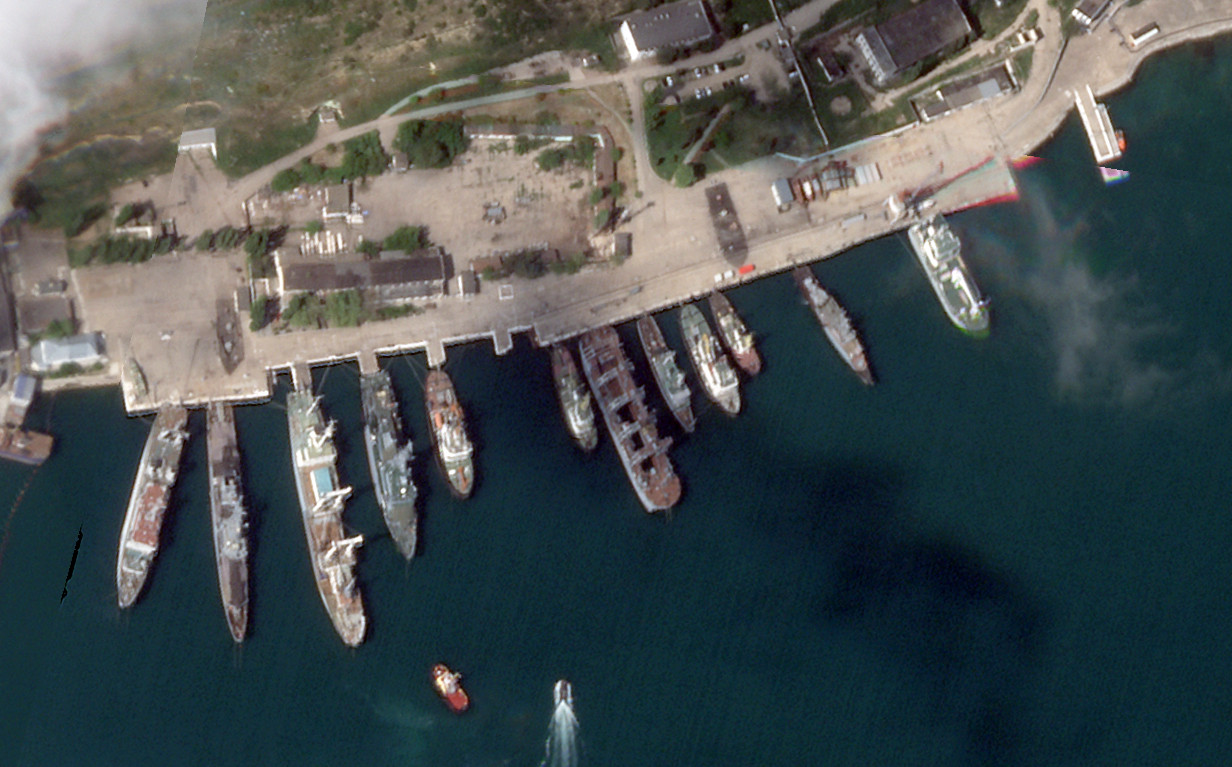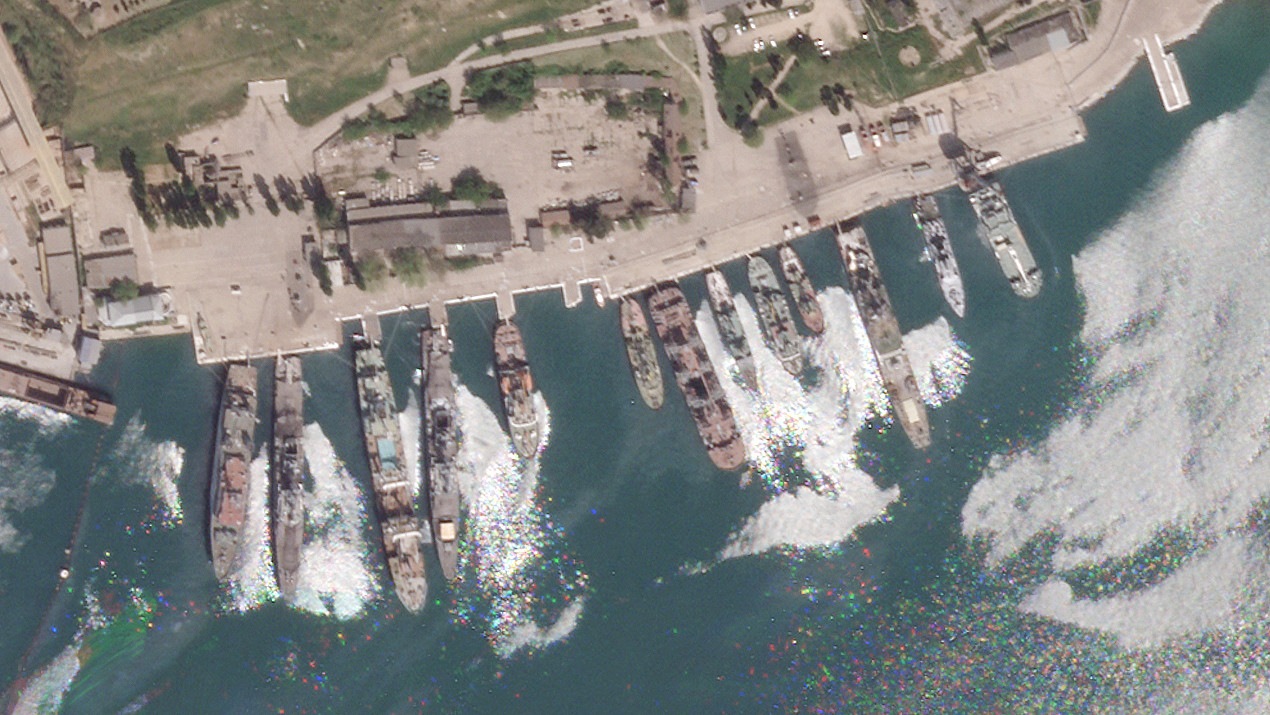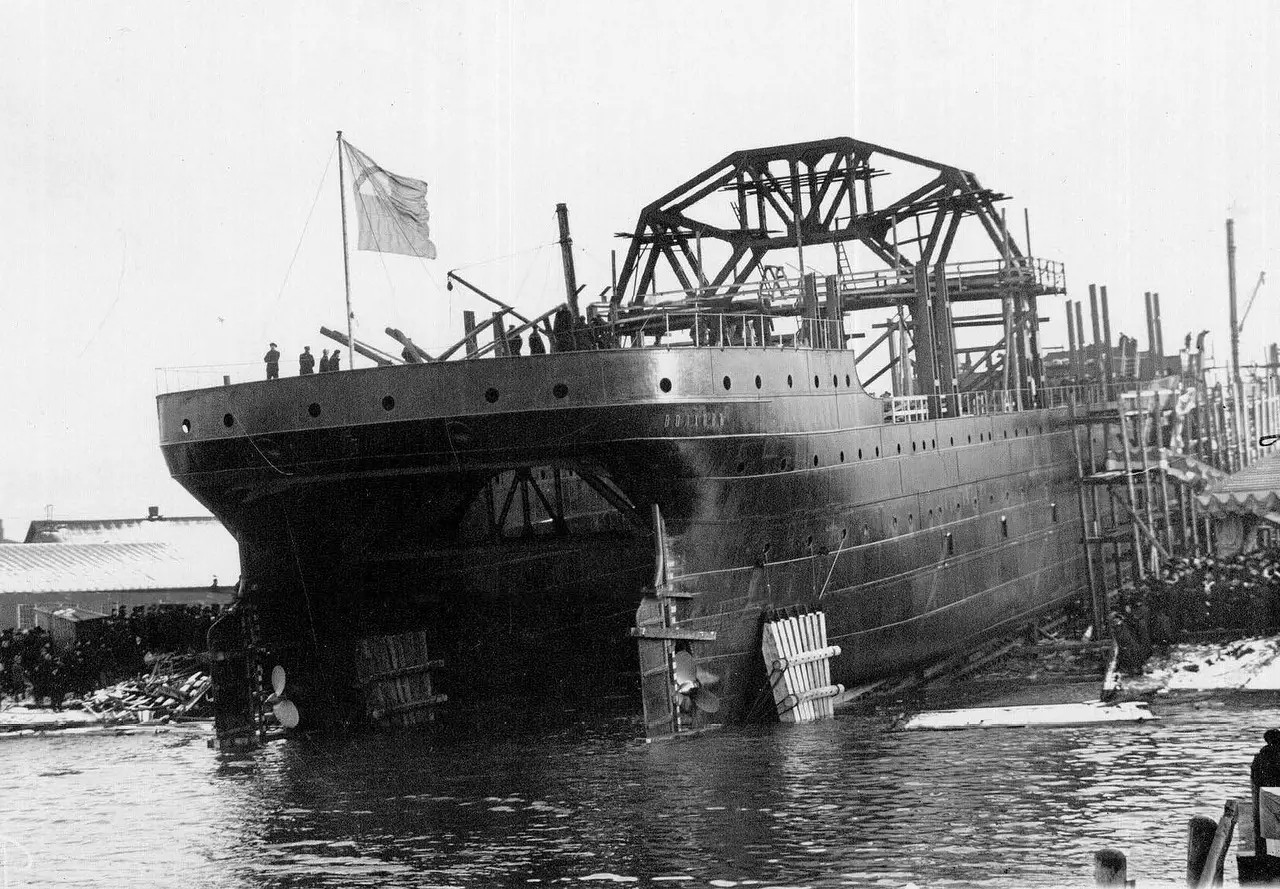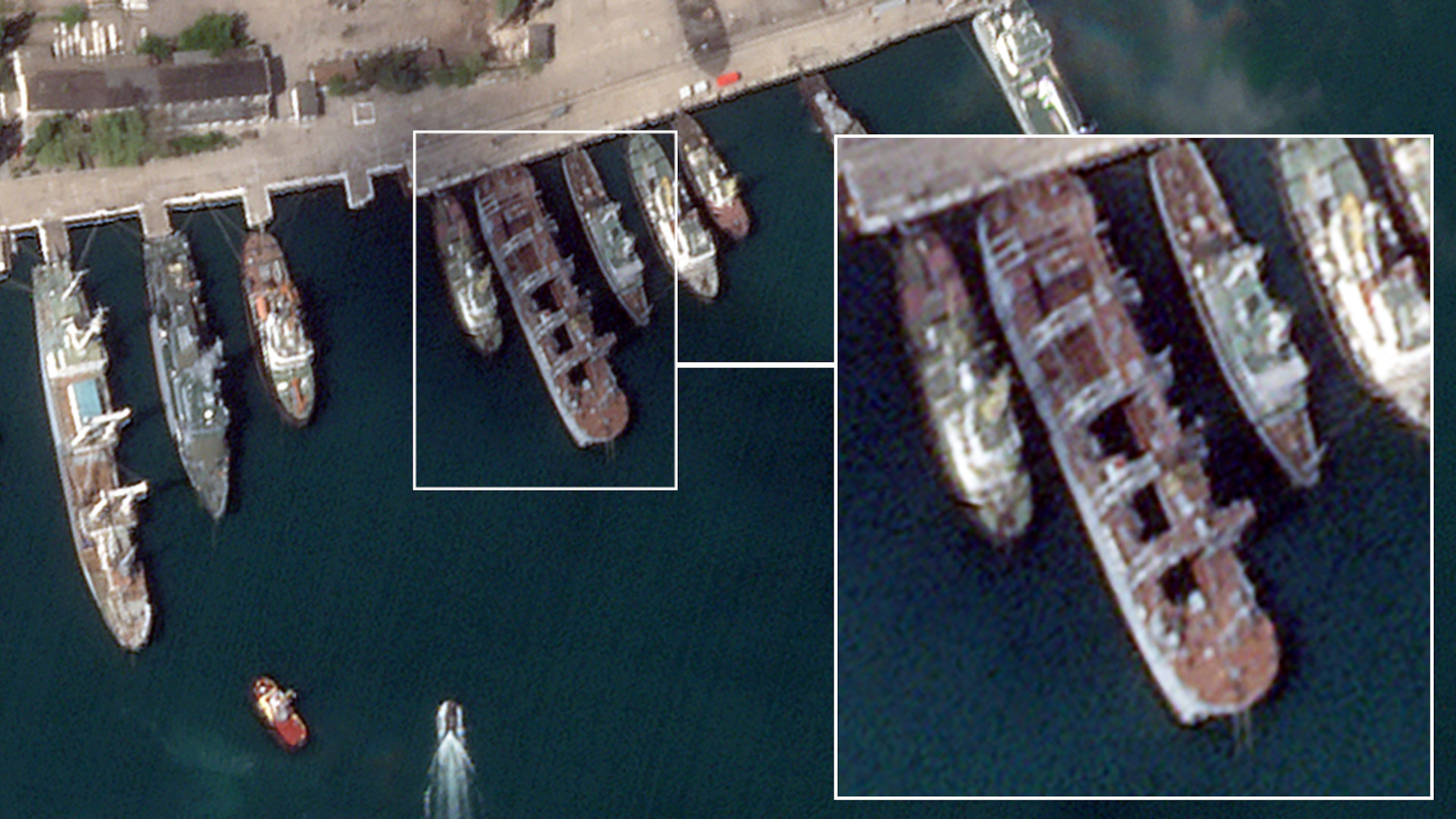The Russian Navy’s unique submarine rescue and salvage vessel Kommuna, which is more than 100 years old, shows no clearly visible signs of being damaged by a Ukrainian strike yesterday based on satellite imagery. Despite being one of the oldest naval vessels in active service anywhere in the world, Kommuna continues to offer a range of valuable underwater search and recovery capabilities that could make it an attractive target.
The War Zone obtained satellite imagery taken earlier today from Planet Labs showing Kommuna in port in Sevastopol on the Russian-occupied Crimean Peninsula. Another satellite image captured on April 20 also shows the very distinctive catamaran-hulled ship in the same location and in the same apparent condition.


The Ukrainian armed forces claimed to have hit Kommuna while it was sitting in port in Sevastopol on the Russian-occupied Crimean Peninsula over the weekend, but also said the “nature of the damage is being verified.” It is still possible that the Russian ship suffered some degree of damage, such as from shrapnel, which is not visible in the image from Planet Labs. Whatever the case, the vessel definitely remains afloat and intact.
A video had emerged yesterday appearing to show a ship in this part of Sevastopol on fire following a Ukrainian strike. Observers have already noted that this could have been any of several other ships ablaze based on the vantage point from which the footage looks to have been shot. The satellite imagery from Plant Labs does not appear to show any other ships to either side of Kommuna with clear scorching or other indications of fire damage, either.
Whether or not Kommuna suffered any damage from a Ukrainian strike this weekend, it would not be surprising for the ship to have been targeted. The vessel was originally built for rescuing stricken submarines and entered service with what was then the Imperial Russian Navy in 1915 with the name Volkhov. The ship was used at least twice in its intended role in 1917, being used to raise a sunken American-made Holland class submarine and a domestically-produced Bars class boat in separate operations that year.

In 1922, in the latter stages of the Russian Revolution, Volkhov was renamed Kommuna, or commune in English, by the fledgling Soviet government. During World War II, the ship was used to recover a variety of sunken ships, as well as aircraft and armored vehicles from various bodies of water, and also acted as a submarine tender.
During the Cold War, Kommuna was upgraded and modified on multiple occasions to deploy and recover various submersibles and remotely operated underwater vehicles. You can read more about the ship and its history here.
Today, Kommuna remains in service after more than a century ostensibly in the submarine rescue and salvage roles. It was reportedly involved in recovery operations after Ukrainian forces sunk the Moskva in the Black Sea in 2022. The ship’s configuration and ability to employ submersibles/ROVs also give it inherent capabilities to examine, recover, and/or manipulate objects on the seabed for intelligence-gathering and other purposes.

As such, damaging or destroying Kommuna would deprive the Russian Navy of a unique underwater capability in the Black Sea. There would also be a benefit propaganda-wise to sinking or at least severely damaging such a historic ship that survived two world wars.
For the moment, at least from what we can see in the satellite imagery, Kommuna looks to have escaped any serious damage this weekend.
Contact the author: joe@twz.com
